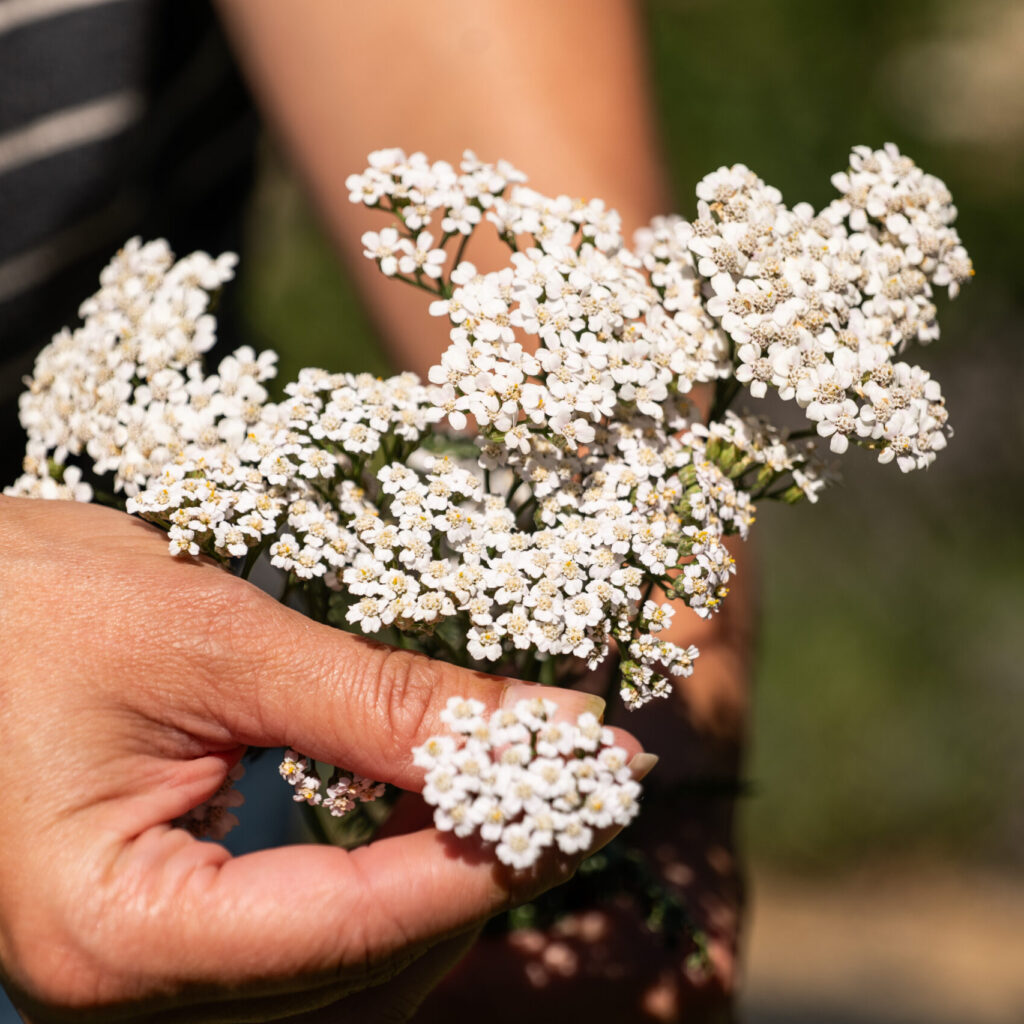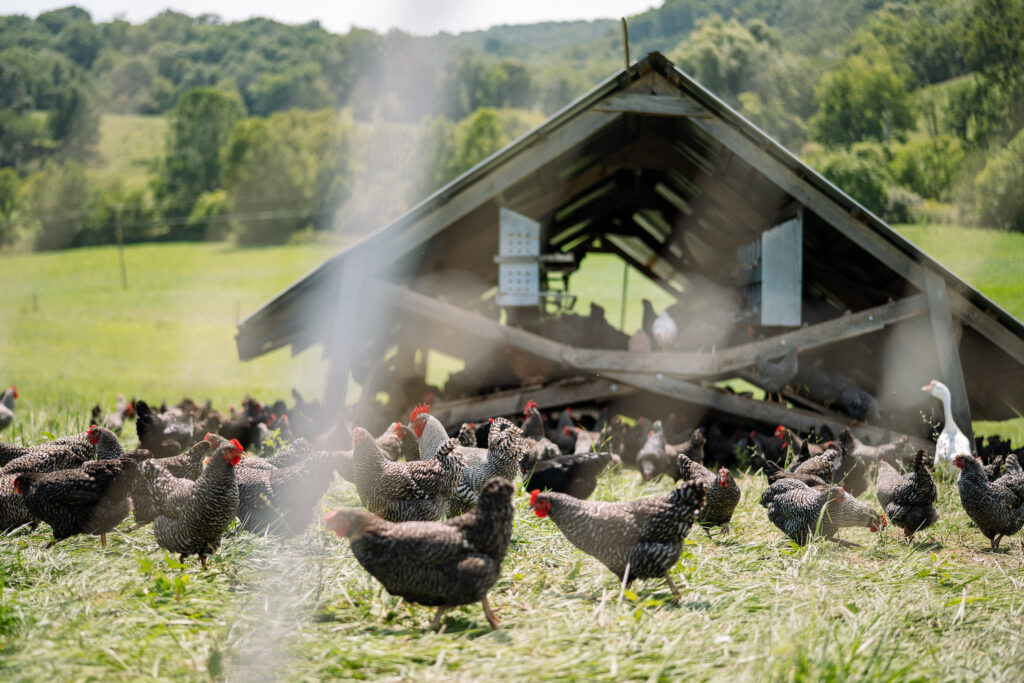Anyone who has animals will eventually need the assistance of a veterinarian, and we can all be thankful for vets—even though nobody wants to have to use a vet’s services. Many home remedies exist and the goal in livestock management is to eliminate problems from happening. If problems develop, try to deal with them in-house.
Probably the most important thing when it comes to preparing for potential problems is to realize that animals are not people. What you would spend to help your child heal is not what you would spend to help your livestock heal. Many of us have watched vet bills pile up to unreasonable levels to save a pet.
As much as I like animals, anthropomorphizing them doesn’t help. A chicken is never worth more than a few dollars. A pig, a little more. A cow can be worth several hundred dollars. The remedy needs to be less than the animal is worth. You can’t afford to take a chicken to the vet.

What you can do is manage things for health. The number one way to never see a vet is to stay out of the animal geriatric business. Cull ruthlessly. Old animals are susceptible to every malady you can imagine; get rid of them. I know folks who would rather see a toothless cow get skinny and die than turn her into hamburger. That’s foolish.
The critical elements of health are diet, sanitation, comfort, and stress. A Scottish Highlander in Alabama cannot be comfortable. You need to start by matching the breed and genetics of the animal to its comfort zone. Don’t move animals from brittle environments (rainfall under 15 inches) to temperate areas (rainfall more than 15 inches). Keep them within their climatically-adapted region.
Have a “sickpen” at the ready
One of the most universal cures for mopey animals is isolation. Even weak chickens will often perk up when separated into a special sickpen. Animals are bullies. Every group of animals—no matter how small—has a hierarchy. Some get first dibs on everything; others get the leftovers. That nutritional and emotional stress can wreak havoc on less dominant animals. Giving that struggling critter a separate place, away from having to muscle for morsels, can often be the difference between healing and dying.
Having a sickpen at the ready to receive a distressed animal is a key vet prep tool. I think sometimes your chances of having to nurse a sick animal are in direct proportion to how ready you are for such a need. If you’re ready, nothing gets sick. If you’re not ready, something will get sick. This is livestock husbandry psychology 101, and perhaps a corollary of Murphy’s Law (anything that can go wrong will, at the worst possible moment).
Give Animals A Strong Start
Diet is always important, especially with chickens because they have such a race car metabolism. Make sure chickens have plenty of grit to keep their gizzards functioning at peak efficiency. I don’t like crumbles or pelletized feed because the heat in the processing breaks down some vitamins and enzymes. Don’t grind the feed too fine; let it have some texture, or coarseness. Birds don’t eat powder; they eat seeds and bugs. Whole foods.
The biggest killers for little chicks is temperature (too hot or too cold), drafts, and unsanitary floor conditions. Use a fluffy carbon for bedding, like wood shavings or double-ground bark mulch; something they can scratch.
Anything that caps, like straw, newspaper, sawdust, or wood chips (too heavy for them to scratch) will quickly become soiled with wet manure. That’s deadly. Carbon the birds can scratch and stir is key. If you smell manure, imagine what the chicks smell; they’re living in it and on it.
Pigs need hygiene too. That means deep, absorptive bedding and dry places to sleep. They like to get wet, especially in hot weather, but they can’t handle being wet all the time. The number one tonic for a pig is charcoal. All my pre-1930 hog rearing books start the sickness chapters with the virtues of feeding charcoal.
On our farm, we’ve had pigs we thought would die in a week. After isolating them in a sickpen, we gave them charcoal, and in a couple of weeks they seemed fit for the county fair. Again, it seems almost miraculous. An unthrifty pig will eat half a pound or more of charcoal a day. When we clean the wood ashes out of our outdoor water stove, we sift the material to separate the ashes from the clinkers. The clinkers go to the pigs and the ashes go to the chickens. Birds like to fluff in ashes, which helps keep mites away.
Sheep are prone to parasites; move them frequently and give plenty of rest between grazings (ideally 40-50 days). Parasite resistance is highly genetic. When purchasing animals, get them from someone who doesn’t use parasiticide and vaccines. Get animals from someone who raises them like you want to raise them. Pharmaceuticals can mask a host of weaknesses. Kicking crutches out from under your flock or herd will show you who can thrive and who can’t. Select only hardy animals. Again, ruthless culling. Making decisions based on emotional attachment is one of the best ways to go bankrupt with heavy vet bills.
Dealing With Diseases
I confess to not knowing a lot about diseases. Over the years and raising many thousands of animals, I’ve had almost zero vet bills. I probably spend three times as much on minerals for cows and sheep than the average producer, which seems a lot cheaper than doctoring.
No matter what, though, you’ll have sick animals from time to time. Besides separation into a sickpen, I don’t do much for a chicken. But a cow is a different story. Obviously you need a way to restrain a large animal. A head gate is a must for cattle. Good chute and catch arrangements make treatment easier. The harder it is to contain a cow, the less likely you are to look at her.
My go-to book for diagnosis is the Merck Veterinary Manual. I’ve used it countless times, not for doctoring, but for diagnosis. By far the most useful home vet book in my arsenal, it’s written for vets so the language is medical and regimented. It’s like reading the Encyclopedia Britannica for elementary students. But it’s comprehensive and uncannily descriptive.
Many years ago we had a situation where our chicks would go lame—lots of them. It was not isolated; we had 10 percent going down. Their toes would curl up and they couldn’t walk. They’d flap around helplessly trying to get from feed to water. In my Merck Veterinary Manual, I found “curly toe” in chicks. While it recommended an antibiotic, the diagnosis and explanation said the root cause was riboflavin deficiency. Liver is high in riboflavin, so I gave the sickpen some beef liver, and within a couple of days, they straightened up and began walking normally. It was like a miracle. That manual is indispensable; I can’t imagine having livestock without it. Again, you don’t have to use a drug, but at least you can know what you’re dealing with.
Injuries, Wounds, and Birthing Complications
For lambs, kids, and calves, you want a stomach tube if you have a slow-starting newborn. Over the years, I’ve witnessed almost miraculous get-up-and-go’s after squirting some colostrum into a calf’s stomach. The key to inserting a stomach tube is to keep the nose of the newborn below the eyes—that way the tube won’t accidentally go down the windpipe and into the lungs. Push the nose down so it stays below the animal’s eyes and you can be sure the tube went into the stomach. Put some Vaseline or other lubricant on the tube before inserting. And be patient about pushing it past the throat so you don’t injure the esophagus.
Obstetric chains are not necessary but are good to have on hand for a calf. I’ve used a couple of baler twines more times than I care to admit, but the obstetric chains are much easier to feel in the sliminess of the moment. To milk out colostrum or assist in birthing a calf, the head chute restraint is paramount. Don’t ever get a cow or calf without first having a working head chute.
Injuries and wounds generally receive the same kind of treatment as for a person. The problem is keeping bandages from being scratched or licked off. But again, a sickpen where the animal can be quiet after having a wound thoroughly cleaned and disinfected can do wonders for healing and the animal’s psyche. I’m convinced animals know when caretakers give them special attention.
Several years ago, we had a 500-pound steer fall into our swimming pool. It was built by the previous farm owners back in the 1950s and does not have steps going in. It’s just a 5½-foot-deep rectangular hole in the ground. We found the steer hours after it had fallen in and it was nearly frozen. That March evening, I jumped in with ropes and nearly drowned myself getting a sling underneath the beast. We lifted him out and he stood there for a while before moving. For the next year, as he grew, he would come over to me in the field like a pet dog and lick my hand or just rub up against me. He knew. We ate him anyway.
So, the lesson is clear: In order to save money on vet bills, the best preparation is good animal care. Next is to be armed with information. Finally, have a sickpen and a tender heart to administer needed care… within economic reason. Realize that anyone who’s ever raised animals has lost some. Fortunately, animals can be replaced. Nevertheless, be prudent in both care and treatment.







Leave a Reply